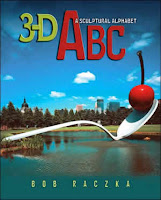In all fairness, this post could be labeled a cheating post. Earlier today I placed this information on the collaborative blog I author with another academic librarian. Since very little has been heard from Susan Patron during the firestorm of controversy I was interested in reading what she had to say about the situation. What I have posted is a very small part of the article, not interview, she wrote for the LA Times. Even though you have to create an account to read the article, it is worth the few minutes required to complete the process.
The AASL blog posted an addendum to their ALA post linking to a Los Angeles Times article by Susan Patron, author of The Higher Power of Lucky. The article, 'Scrotum' as a children's literary tool, is a response to the ongoing controversy.
"Books that offer hope to tender and impressionable readers (by which I mean all children) armor them against the confusing, frightening, numbing realities of life. My protagonist, Lucky, terrified that she'll be abandoned by her guardian, makes a desperate plan to run away with her beloved dog. I wanted to write an honest story that would fill readers with hope and let them see that even in a gravely flawed world, there are adults who will nurture them, adults — no matter how scruffy and unlikely — who have compassion and integrity. I wanted to give readers a book in which they, like Lucky, would find courage, love and empowerment.
And parents who worry about having to explain the meaning of "scrotum" can relax. Children who read the entire book will discover exactly what it means, in a context that is straightforward, reassuring and truthful. " (Patron, LA Times, 2/28/07)
Please note, when following the article link you will be required to create an account with LA Times.com to read the article.
Tags: ALA, Higher Power of Lucky, Newbery Award















